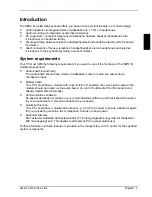
KDFX Reference
KDFX Algorithm Specifications
10-121
Rotary Effects
738 VC+Dist+1Rotor 2
739 VC+Dist+HiLoRotr
740 VC+Tube+Rotor 4
741 Rotor 1
742 VC+Dist+HiLoRot2
Rotating speaker algorithms
PAUs:
1 for
Rotor 1
2 each for
VC+Dist+1Rotor 2
,
VC+Dist+HiLoRotr
,
and
VC+Dist+HiLoRot2
4 for
VC+Tube+Rotor 4
The rotary algorithms contain multiple effects designed for the Hammond B3
®
emulation (KB3 mode).
These effects may include the Hammond
®
vibrato/chorus, ampli
fi
er distortion, cabinet emulation and
rotating speaker (Leslie
®
). A variety of rotating speaker algorithms have been designed to deal with
different circumstances Some of the algorithms are designed to trade off features or model quality to allow
the rotating speaker model to work in fewer PAUs.
The
fi
rst effect in the chain is often the Hammond vibrato/chorus algorithm. The vibrato/chorus has six
settings which are the same as those used in the Hammond B3: three vibrato (V1, V2, V3) and three chorus
(C1, C2, C3) settings. In
VC+Tube+Rotor 4
, the vibrato chorus has been carefully modeled after the
electromechanical vibrato/chorus in the B3. The vibrato/chorus in the other smaller algorithms use a
conventional design, which has been set to match the B3 sound as closely as possible, but does not quite
have the same character as the fully modeled vibrato/chorus.
The
fi
nal section of each of the rotary algorithms is the rotating speaker routine. The various algorithms
may trade off some features of the rotating speaker routine and the tradeoffs will be discussed for each
algorithm separately. However as an introduction, let’s discuss a full featured rotating speaker.
The rotating speaker has separately controllable tweeter and woofer drivers. The signal is split into high
and low frequency bands and the two bands are run through separate rotors. The upper and lower rotors
each have a pair of virtual microphones that can be positioned at varying positions (angles) around the
rotors. An angle of 0° is loosely de
fi
ned as the front of the speaker. You can also control the levels and left-
right panning of each virtual microphone. The signal is then passed through a
fi
nal lowpass
fi
lter to
simulate the band-limiting effect of the speaker cabinet.
Figure 52
Rotating speaker with virtual microphones
Содержание K2661
Страница 18: ...2 4 LFOs LFO Shapes...
Страница 34: ...3 16 DSP Algorithms...
Страница 54: ...5 4 MIDI Note Numbers Note Numbers for Percussion Keymaps...
Страница 72: ...7 10 System Exclusive Protocol K2661 System Exclusive Implementation...
Страница 82: ...9 4 Upgrading Sample Memory Choosing and Installing a SIMM for K2661 Sample Memory...
Страница 334: ...10 252 KDFX Reference KDFX Algorithm Specifications...
Страница 340: ...11 6 Glossary...
Страница 382: ...12 42 Triple Modular Processing Alphanumeric Buttonpad Entries for DSP Functions...
Страница 392: ...B 6 SysEx Control of KDFX MSB and LSB...
Страница 442: ...D 20 Contemporary ROM Block Objects Controller Assignments Contemporary ROM Block...
Страница 490: ...H 12 General MIDI Standard Mode Controller Assignments...
Страница 492: ...I 2 Live Mode Objects Live Mode Programs...
Страница 498: ...K2661 Musician s Reference Index...
Страница 500: ......
















































